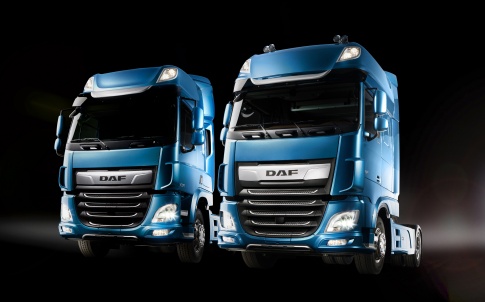
Led by the Transport Research Laboratory (TRL) and involving partners including DAF Trucks, Ricardo and DHL, the £8m on-road trials, which are expected to take place in 2018, will focus on the use of platooning technology.
This will see two or more vehicles connected with ‘vehicle to-vehicle communication’, allowing them to effectively communicate with each other and operate as a single unit.
During a platooning operation, the lead vehicle takes control of the speed and direction of all the vehicles in the platoon, when the lead vehicle brakes the following vehicles automatically brake with zero reaction time significantly increasing road safety. The constant controlled speed delivers fuel savings and environmental benefits through the reduction of CO2 emissions, whilst the ability to decrease the distance between vehicles increases road network capacity.
According to TRL the trials will be tailored to the unique requirements of UK roads and will collate the evidence required to understand issues such as fuel efficiency and reduced emissions, safety, acceptance by drivers and other road users, implications for future infrastructure, and the commercial case for adoption.
Rob Wallis, chief executive, TRL said: “The UK has an unprecedented opportunity to lead the world in trialling connected vehicle platoons in a real-world environment. TRL and its consortium of leading international partners, have the practical and technical knowledge gained from previous projects to understand what is required to put a connected vehicle platoon on to UK roads safely. The team are now taking that expertise and uniquely applying it within live traffic operations.”
Transport minister Paul Maynard added: “We are investing in technology that will improve people’s lives. Advances such as lorry platooning could benefit businesses through cheaper fuel bills and other road users thanks to lower emissions and less congestion. But first we must make sure the technology is safe and works well on our roads, and that’s why we are investing in these trials.”
As previously reported by The Engineer there have already been a number of trials of platooning technology around the world, including, back in 2012, the SARTRE project (Safe Road Trains for the Environment). This saw a convoy of vehicles travelling just six metres apart from each other formed a road train on a motorway outside Barcelona.
There is also a broader push to develop the technology through the European Truck Platooning challenge, an EU-led project which involves a number of the major truck suppliers.
The UK trials will begin following the successful completion of a rigorous programme of driving simulations, driver training and test track trials over the coming months.




Nanogenerator consumes CO2 to generate electricity
Whoopee, they've solved how to keep a light on but not a lot else.